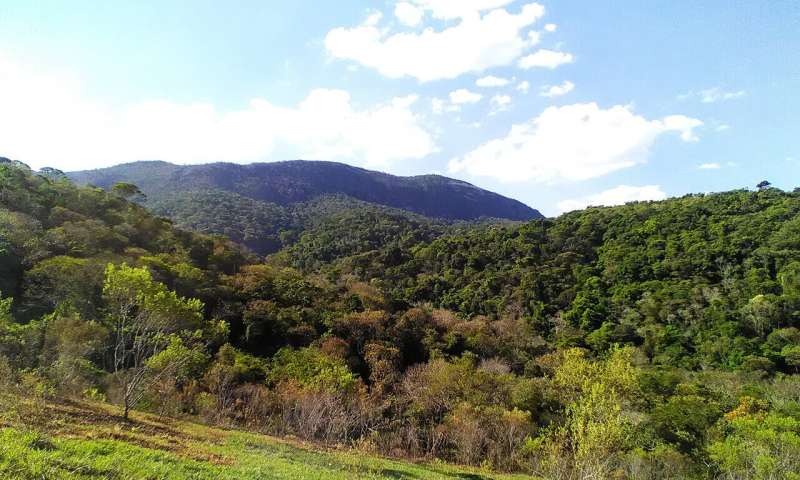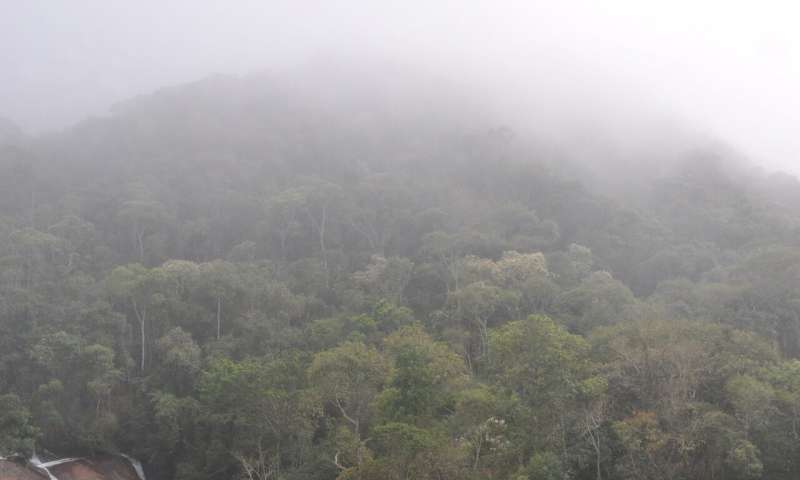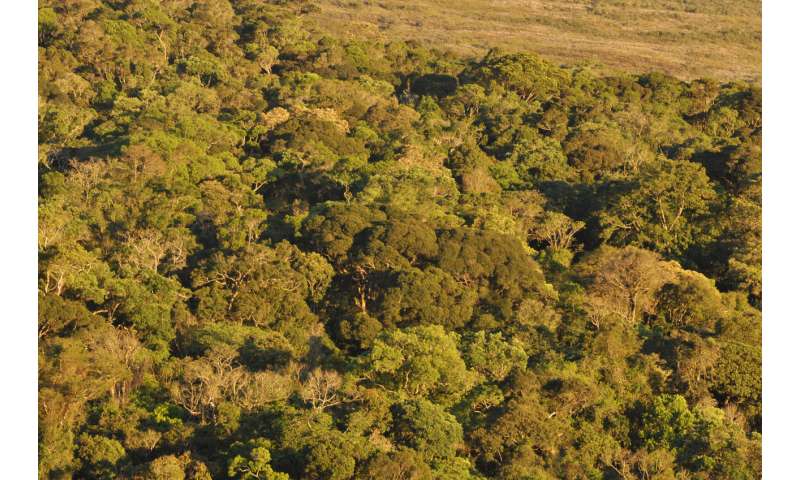December 21, 2020 report
Brazilian forests found to be transitioning from carbon sinks to carbon sources

Bob Yirka
news contributor

A team of researchers affiliated with several institutions in Brazil has found that some non-Amazonian forests in Brazil have already begun to transition from carbon sinks to carbon sources. In their paper published in the journal Science Advances, the group describes their 33-year study of deciduous, semi-deciduous and evergreen forests in Brazil's state of Minas Gerais.
As the researchers note, for several years, climate scientists have been predicting that some of the forest area in Brazil would soon transition from carbon sinks to carbon sources—including the rain forests. They have noted that as temperatures in the area have risen, and as humans have continued to burn forests, the amount of carbon released by forests in some parts of the world, such as Minas Gerais, would begin releasing more carbon than was being sequestered by natural tree growth. To find out if this might be the case for 32 forests in Minas Gerais, located in southeastern Brazil, the researchers began measuring carbon dioxide sequestering and emittance back in 1987. They continued monitoring and measuring the region up through 2020.
In looking at their data, the researchers found that forests in the studied region (which covered 33 hectares of land) were sequestering approximately 2.6% less carbon per year in 2020 than they were back in 1987. And during that same time period, the area released approximately 3.4% more carbon dioxide. In looking at total amounts being sequestered versus emitted, they found that the region now emits more carbon dioxide into the atmosphere than is sequestered—changing it from a carbon sink to a carbon source. The data also showed that the region experienced a tipping point back in 2013.
-

Evergreen forest in Brazil. Credit: Rubens Santos -

Semideciduous forests in Brazil. Credit: Rubens Santos
The researchers suggest that the problem is not unsolvable—even with a warming planet, it would be possible for the region to transition back to a carbon sink if land management changes were made. They suggest the Brazilian government ban forest burning and promote forest planting. They note also that efforts to reverse global warming by reducing global emissions could help, as well. They also point out that failure to make changes will likely mean that more forested areas in Brazil (and other parts of the world) will transition from carbon sinks to carbon sources—including rainforests in the Amazon river basin.
Written for you by our author —this article is the result of careful human work. We rely on readers like you to keep independent science journalism alive. If this reporting matters to you, please consider a (especially monthly). You'll get an ad-free account as a thank-you.
More information: "The carbon sink of tropical seasonal forests in southeastern Brazil can be under threat," Science Advances (2020).
Journal information: Science Advances
© 2020 Science X Network



















